New for 2023: The Loof 17/260 Needle
- By Pete Moore
- April 1, 2023
- 08:04 AM
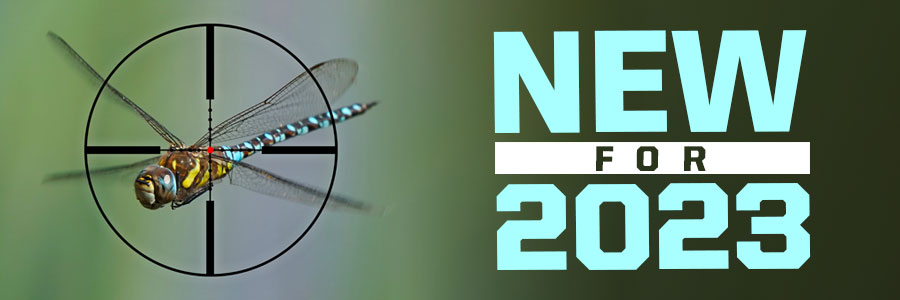
Pete Moore introduces us to what might be the world’s oddest cartridge, designed for a very specific purpose, the dragonfly. There’s little doubt, the USA is the cradle of innovation and for that matter eccentricity, when it comes to guns.
Big business!
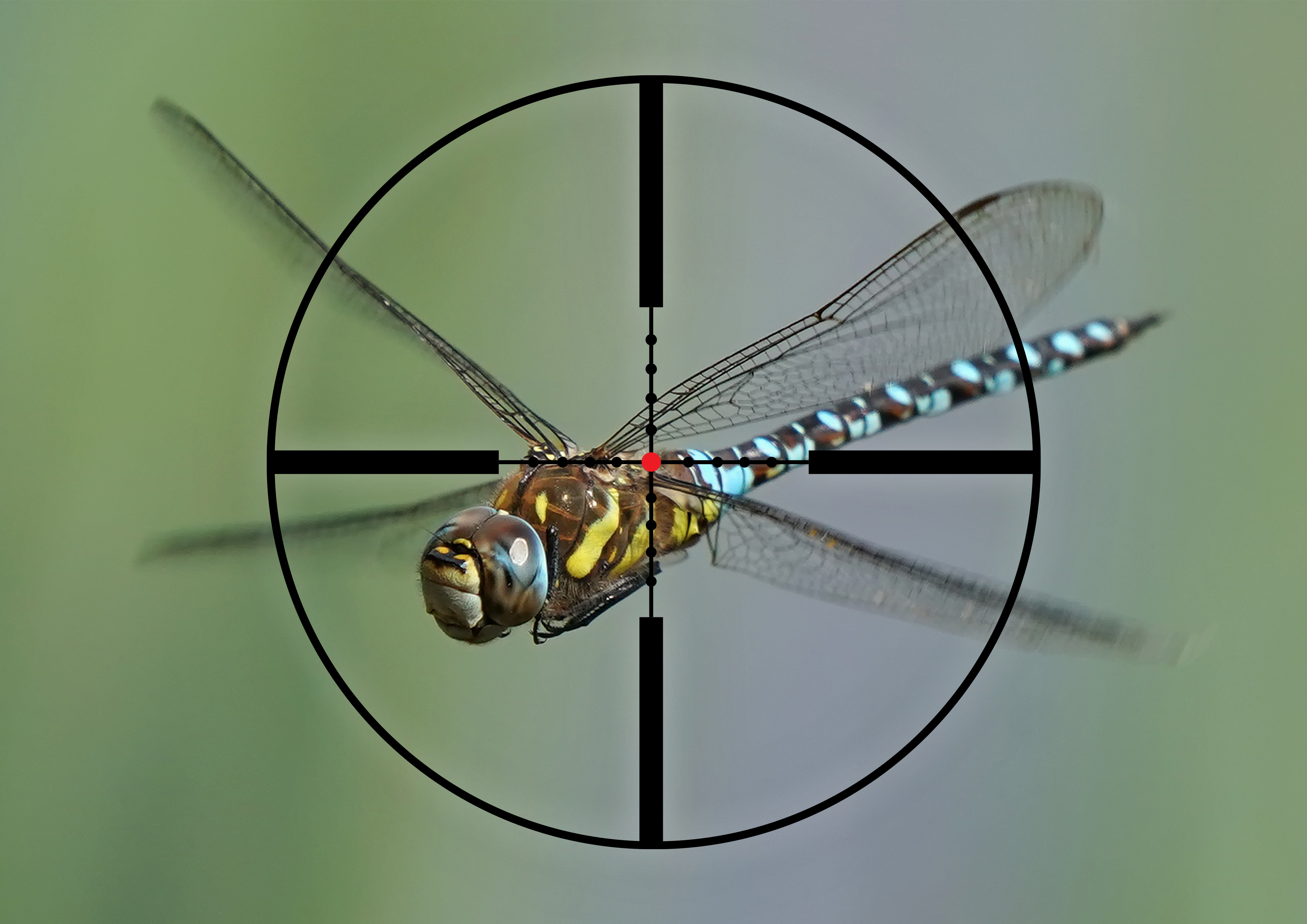
Much like turkey hunting, dragonfly hunting has become its own industry and sport. From the shooter's point of view, the ‘challenge’ is all about small targets at all ranges. Which requires a purpose-built, choice of equipment.
Pick your quarry
Although a sport, Varminting, which includes dragonfly hunting, can become an obsession. This story is about a wildcat (purpose-made calibre) cartridge called the Loof, 17/260 Needle. Which is a perfect example of one man’s journey into the heart of darkness.
Lirpa Loof, was an American shooter of Finnish decent, a multi-millionaire and keen varminter, the last two go hand-in-hand, so the sky was the limit. Like all people, who perhaps indulge their passions too much, he, unsurprisingly, got jaded, by the thing he loved and was looking for a new challenge.
You’re kidding?
Dragonflies was the answer! Yes. These amazing creatures existed millions of years ago and still do today, and are the consummate arial hunters of the insect world.
They have a high, power to weight ratio and can pull 4 Gs of gravity when accelerating in a straight line and 9 Gs in turns. Some species can achieve speeds of 36-54 Km/h and get this; move 100 body lengths per second in forward flight and three backwards. Visually they can see and process 200 images per second and have 360 degree vision. They use ‘motion camouflage’ that allows them to move towards rivals in such a way that they suddenly appear.
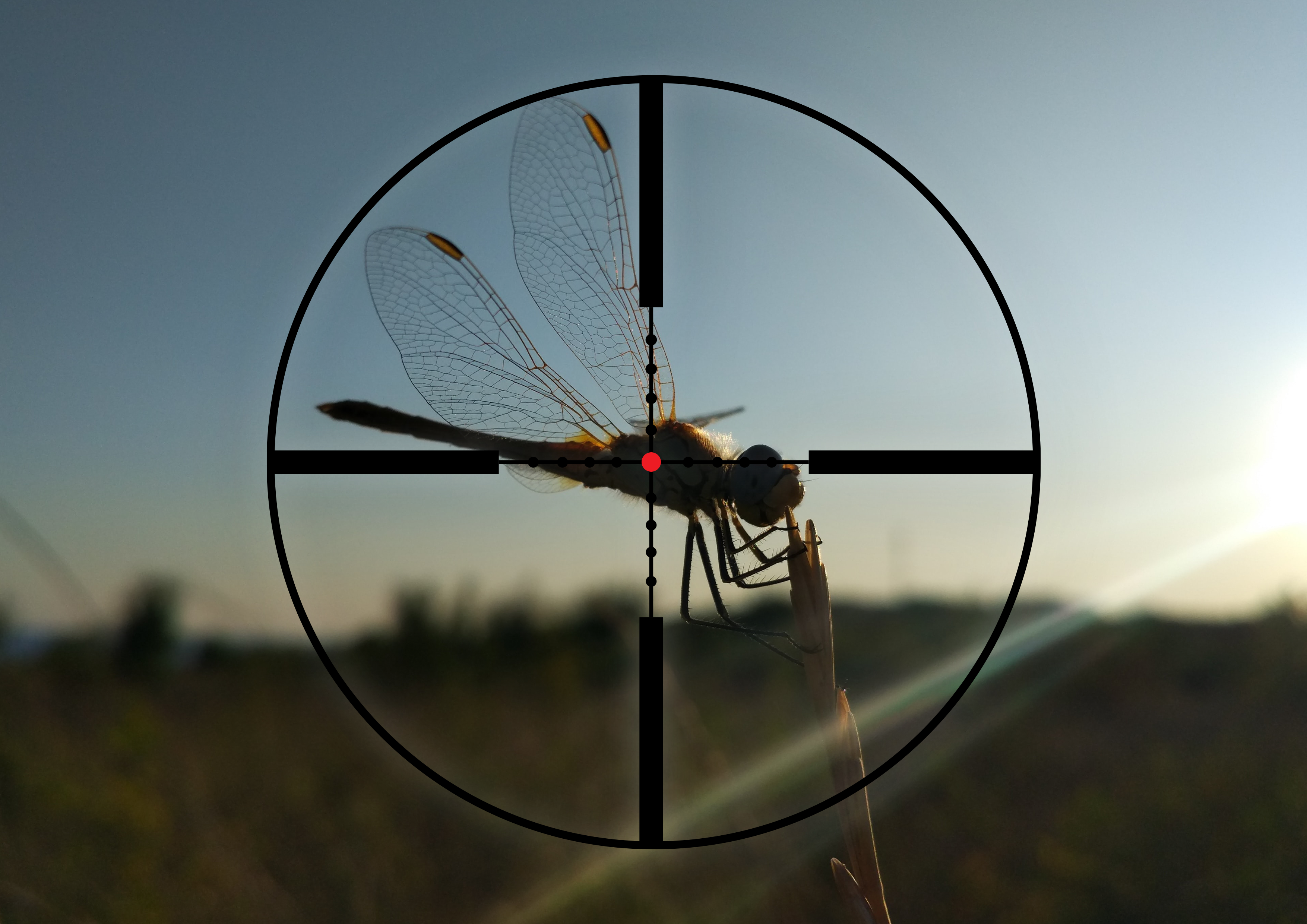
Keep still
With more sensory equipment than on top of the CIA building, they are the perfect predator in their world and possibly the ultimate varmint shooter’s quarry. And I would guess near impossible to hit, as a high velocity bullet coming at something that can see and feel everything in the world around it, would be easily detected. If you’ve ever been pigeon shooting and lined up on that perfect going away shot (muzzle just under the bird) only to see it wing over at the last second, because it detected the air in front of the shot column before it hit. You will understand, that would be magnified, maybe 1000-times in regards to a dragonfly!
Faster than a…
The traditional calibres, even the fastest ones would be of little use, Loof assumed. For example, a 17 Remington firing a 20-grain ballistic tip launches at 4000 fps and takes 0.8 seconds to make 100 yards. Pretty impressive, and seemingly ideal for the job. But as a dragonfly is around 3” long and can move 100 body lengths (25 feet approx) in one second, it could move 20”+, before the bullet got there. And it would be near impossible to calculate lead, so, no cigar! Sitters, might be easier?
Schematic of the cartridge, which used a 260 Rem case as its base.
His solution; build the fastest, flattest shooting cartridge possible, to try and cut down on the variables, as criteria like lock time, bullet flight, wind etc would be critical. Given these factors and the size and abilities of the quarry, 100 yards would become a very long shot.
Sectioned view showing the sabot with dart in section, note the concave end that helped it to release its payload consistently.
How do I know this? I met a chap called DeNoyer at a gun show and we started talking varminting and he told me about Mr Loof’s quest. He was a talented engineer and keen shooter and became a sort of project manager, and as he said to me; “with money not being an object and such a challenging subject, I was hooked.” He continued; “Loof was a good shot, but knew little of ballistics, so employed people from the aerospace and precision engineering fields.”
Getting TOF
The biggest issue was getting the speed up to reduce the time of flight (TOF). By using a Remington 700 Etron X action, firing electrically-primed ammunition, reduced lock time to just 27 microseconds, giving a 99% reduction over the best, mechanical systems. As the firing pin is a simple contact that touches the primer as the action closes, and the trigger an ON/OFF switch, ignition is near instantaneous.
Using a necked down, 204 Ruger case, firing a .17”,15-grain pill at 5500 fps dropped it to 0.06 seconds at 100 yards. So shaving 25% off. But reducing weight on such a small, hi-velocity projectile caused massive inaccuracies, with bullets literally burning up in mid air. Barrel wear was off the chart and a different solution was required.
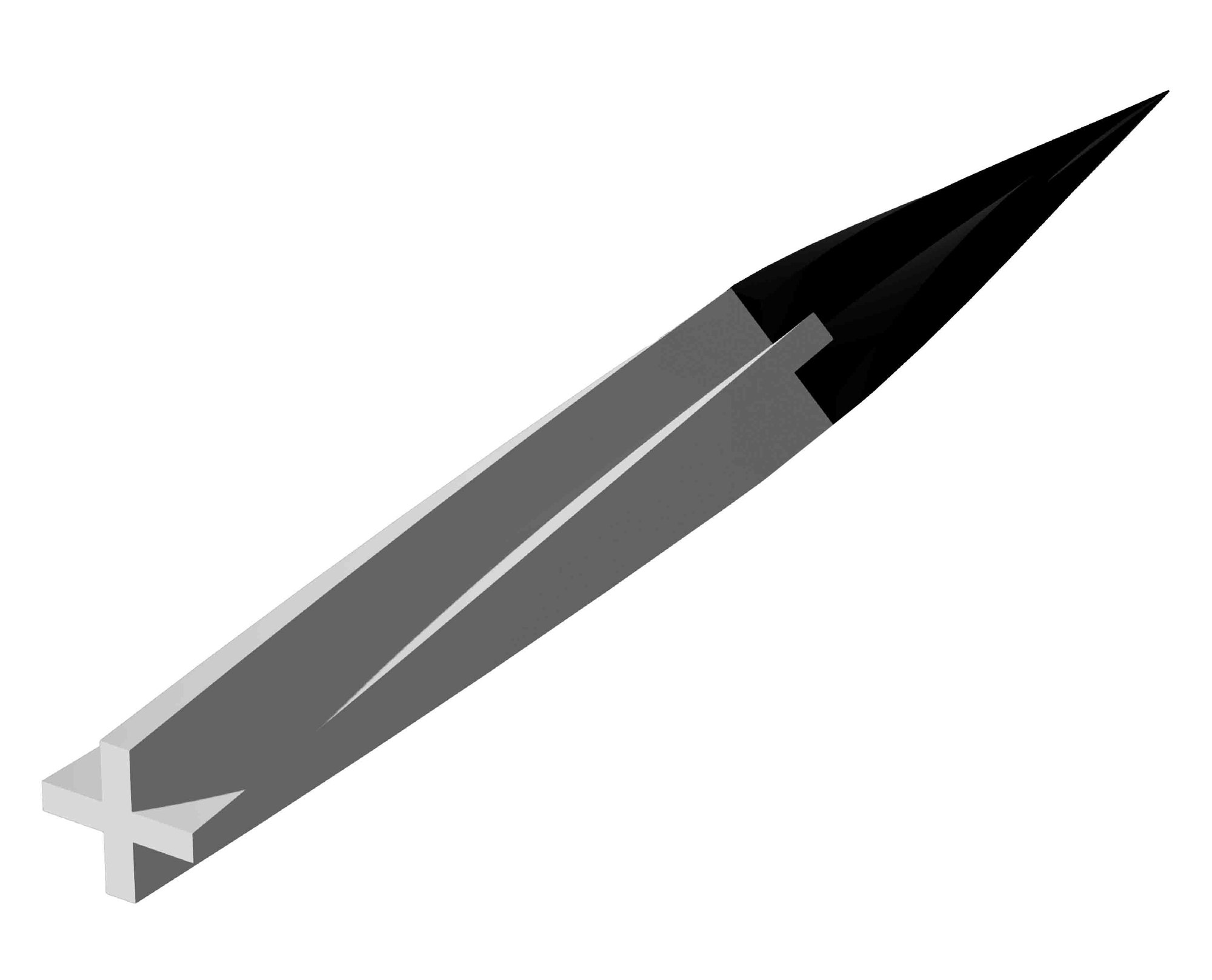
The dart used flush, spiral, cruciform fins that initiated rotation on release and improved accuracy no end
Sabot
Loof, opted for a long/slim, .17”, 15-grain, fin-stabilised projectile mounted in a synthetic sabot, fired in a smooth, ceramic-lined bore, which should reduce wear, but still produce 5500 fps. It was decided to twist the fluted section to rotate and stabilise the dart, as initial testing showed, straight fins did not do the job well enough. To get over the bullet burn out problems he made it from Titanium, with a Tungsten tip, essentially, an aerodynamic dart!
TOF, still hovered around 0.06 seconds, which was about as good as it would get. After all you can’t re-write the laws of physics as the bullet can’t get there until it’s fired, with barrel drag and air resistance, still, unavoidable factors. All this was packed inside a modified, 260 Remington case.
With precise hand loading, the target velocity of 5500 fps was maintained. Muzzle energy was 1007 ft/lbs, and at 100 (Zero distance) dropped to 3928 fps/514 ft/lbs, at 200 it was - 0.84” and 2774 fps/256 ft/lbs. Wind was interesting, at 100 yards with a 10mph blow at 3.00 the dart shifted 14” and at 200, 32”.
Flawed
Further experimentation showed two more flaws. First, the sabot’s did not always release the dart consistently, which massively affected accuracy. A similar problem that Remington had when they launched their Accelerator ammunition range, which used a 0.30” calibre sabot to launch a 55-grain bullet in 30-30, 308 Win and 30-06 rifles. The idea being to turn your deer rifle into a varminter. They don’t make it anymore!
Sabots provide forward obturation and then release their payload as it exits the bore, with air pressure stripping the lighter carrier away. But with a projectile as light as the 260 Needles’ that was not always the case. The solution was two fold;
1 - the section that holds the projectile originally had four-equidistant slots (petals), which was increased to 16, giving a more consistent release.
2 - a muzzle device was added that initiated the separation process and decelerated the sabot so it could not interfere with the dart.
As can be seen this whole project had become a costly obsession, employing as it did, skilled technicians and hi-tolerance products and assembly. Loof, had little concept of the complications, he just wanted it, so money was the driving force, which he had in plenty!
Built for speed
With most issues sorted, using a test barrel/action, the rifle was now in the build stage and to use DeNoyer’s words; “it was an ugly, son of a bitch!”
The fully-floated, 22” x 1.5” barrel sat in a heavy, custom, single-shot 700 action, mounting the Etron X system, all bolted to a Titanium chassis system. It had a fully-adjustable, thumbhole stock and the whole thing sat in a steerable front mount, similar to the joy stick systems precision shooters use.

This Dolphin Arms F-Class rifle, probably looks similar to the Loof gun, but is far prettier
I have included a picture of a Dolphin Arms F-Class rifle, as although a lot better looking than Loof’s Bitch, its shows a similar, generic build. On top was a high mag Zeiss scope with tactical turrets and a custom reticle that gave lead marks in minute of dragonfly (MOD). The whole rig weighed around 30 lbs and was intended to be vehicle-mounted, as Loof would have to go to the dragonflys. DeNoyer reckoned the whole project cost in excess of $2 million.
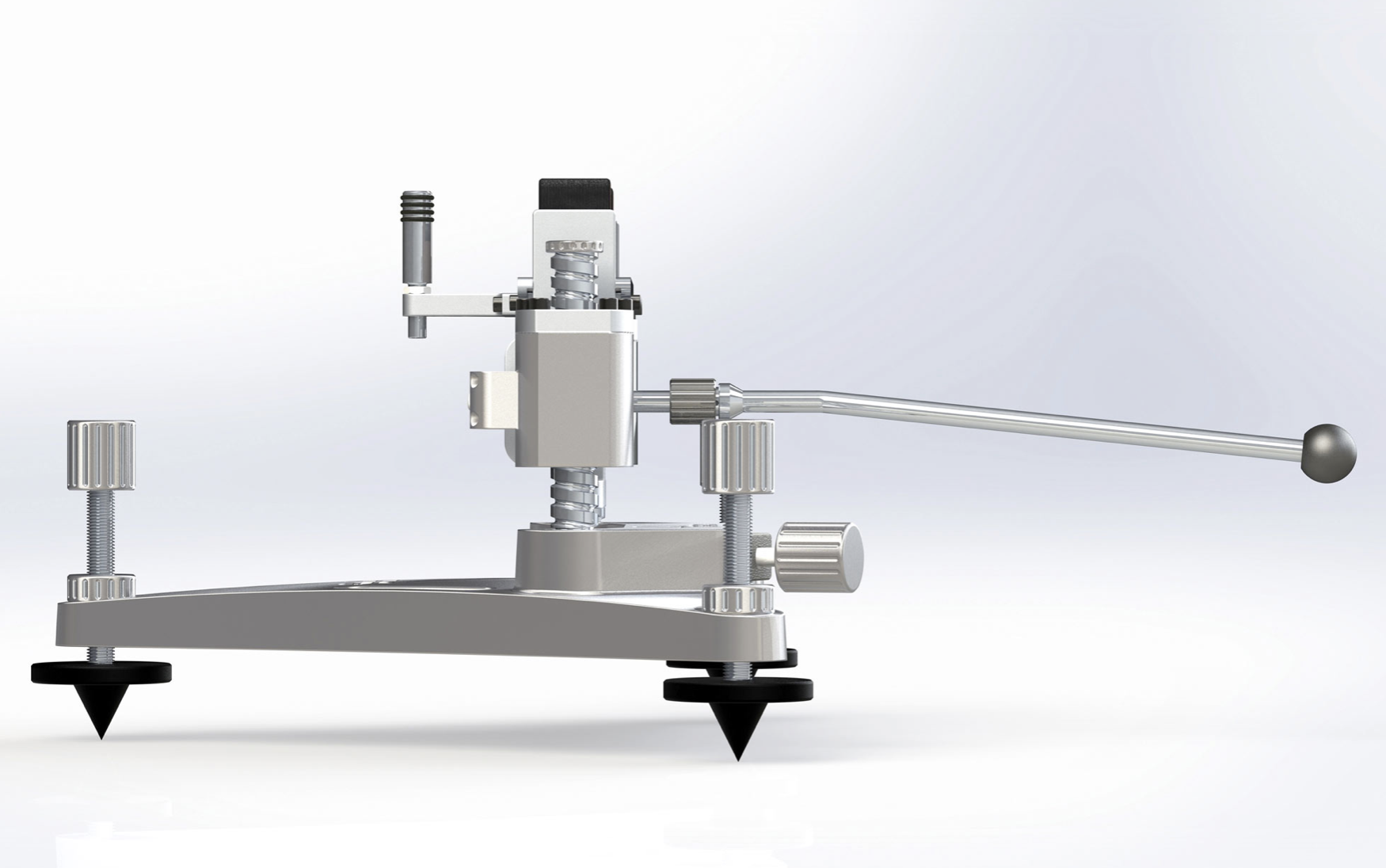
A precision, steerable front rest, allowed for maximum control and shot release.
Non-standard
Accuracy and performance was not in doubt. Test targets consisted of frozen grapes and peas, that when hit vaporised into puffs of steam, such was the heat of the projectile. Zeroing was an issue as the darts tore up paper targets so the group couldn’t be calculated.
Did Loof kill any dragonfly's with it? Over to DeNoyer; “yes and no, he never hit one in flight, but got some hoverers, as, even if the bullet missed the body it could pass through the flapping wings, so destroying them. However, most times the target was not in the same place when the dart arrived. Even, static shots were hard at flys sitting on reeds waving in the wind, but darts passing near certainly disorientated them.”
He continued; “The issue was the quarry, as it was just too damn fast and sensorially aware of its surroundings. Ironically, it was probably not even aware it was being hunted. So all that time, money and technology defeated by a creature as old as the dinosaurs.”
Not happy
DeNoyer gave the impression that Loof was very disappointed, as he ended the project and paid off the team and broke all contact. He did show me a cartridge, which looked like a 260 case with a plastic sabbot that you could just see the tip of the dart in. Stupidly I never took a picture at the time, as he promised to send some, but he never did.
So did Loof’s 17/260 Needle exist? I have seen no references in any US shooting magazines, but from what I can make out he played it very close to the chest. But, I would like to think so, as I ran the figures through a ballistics package and they came up with reasonable, working solutions. However, I reckon his thinking was flawed, and feel something like a 22-250 Ackley with lightest bullets in a custom rifling twist might have been equally effective, or ineffective. I have include some line drawings of what I thought things might have looked like, but that’s just my views.
I will leave the final words, in Finnish from Lirpa Loof, as quoted by DeNoyer, make of it what you will:
“HULLU APRILLIPILA”



